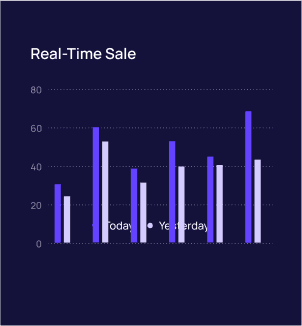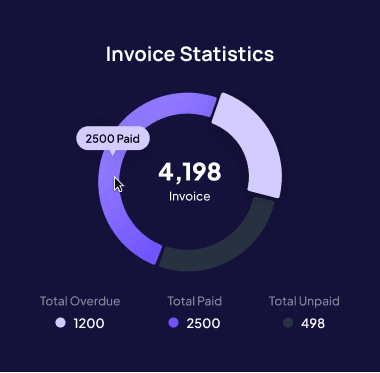Smarter Finance Blog: Your Go-To Resource for Financial Mastery
Smarter Finance Blog: Your Go-To Resource for Financial Mastery
Discover actionable steps to improve cash flow management and ensure your business’s financial stability.
Discover actionable steps to improve cash flow management and ensure your business’s financial stability.

Controlling Accounts Payable
Just as collecting payments on time is essential, managing how you pay your suppliers can also affect your cash flow. Instead of paying invoices immediately, optimize your accounts payable strategy.
Negotiate extended payment terms to improve cash retention.
Take advantage of early payment discounts when they align with your cash flow strategy.
Schedule payments strategically, prioritizing essential expenses.
By aligning your outgoing payments with incoming revenue, you can maintain liquidity and avoid unnecessary financial strain.
Optimizing Operating Expenses
Reducing unnecessary expenses is a direct way to improve cash flow. Conduct regular audits of your spending to identify areas where costs can be trimmed without affecting productivity.
For example:
Cancel subscriptions and services that your business no longer uses.
Outsource non-core activities to reduce overhead costs.
Renegotiate contracts with vendors and service providers.
Lowering operating expenses helps free up cash that can be reinvested in growth or used to build a financial cushion.
Diversifying Revenue Streams
Relying on a single source of income can be risky, especially during economic downturns. Expanding your revenue streams can create a more stable cash flow.
Introduce new products or services that complement your existing offerings.
Explore new markets or customer segments to expand your reach.
Implement subscription-based models for predictable recurring revenue.
Diversification not only increases your revenue but also provides financial resilience in uncertain times.

Forecasting Cash Flow
One of the most effective ways to manage your cash flow is by forecasting it accurately. A well-prepared cash flow forecast allows you to anticipate shortages, plan for upcoming expenses, and make informed financial decisions.
Use historical data to estimate future cash inflows and outflows.
Account for seasonal fluctuations that may affect revenue and expenses.
Regularly update your forecast to reflect changes in business conditions.
By keeping a close eye on cash flow projections, you can avoid unexpected shortfalls and take proactive measures to keep your business financially stable.
Managing Accounts Receivable Efficiently
Slow-paying customers can significantly impact your cash flow. To prevent this, establish clear payment terms and follow up promptly on overdue invoices.
Offer early payment discounts to encourage faster collections.
Use automated invoicing systems to streamline the process.
Set up reminder notifications for clients with outstanding payments.
Consistently managing your receivables ensures that cash keeps flowing into your business without unnecessary delays.

Controlling Accounts Payable
Just as collecting payments on time is essential, managing how you pay your suppliers can also affect your cash flow. Instead of paying invoices immediately, optimize your accounts payable strategy.
Negotiate extended payment terms to improve cash retention.
Take advantage of early payment discounts when they align with your cash flow strategy.
Schedule payments strategically, prioritizing essential expenses.
By aligning your outgoing payments with incoming revenue, you can maintain liquidity and avoid unnecessary financial strain.
Optimizing Operating Expenses
Reducing unnecessary expenses is a direct way to improve cash flow. Conduct regular audits of your spending to identify areas where costs can be trimmed without affecting productivity.
For example:
Cancel subscriptions and services that your business no longer uses.
Outsource non-core activities to reduce overhead costs.
Renegotiate contracts with vendors and service providers.
Lowering operating expenses helps free up cash that can be reinvested in growth or used to build a financial cushion.
Diversifying Revenue Streams
Relying on a single source of income can be risky, especially during economic downturns. Expanding your revenue streams can create a more stable cash flow.
Introduce new products or services that complement your existing offerings.
Explore new markets or customer segments to expand your reach.
Implement subscription-based models for predictable recurring revenue.
Diversification not only increases your revenue but also provides financial resilience in uncertain times.

Forecasting Cash Flow
One of the most effective ways to manage your cash flow is by forecasting it accurately. A well-prepared cash flow forecast allows you to anticipate shortages, plan for upcoming expenses, and make informed financial decisions.
Use historical data to estimate future cash inflows and outflows.
Account for seasonal fluctuations that may affect revenue and expenses.
Regularly update your forecast to reflect changes in business conditions.
By keeping a close eye on cash flow projections, you can avoid unexpected shortfalls and take proactive measures to keep your business financially stable.
Managing Accounts Receivable Efficiently
Slow-paying customers can significantly impact your cash flow. To prevent this, establish clear payment terms and follow up promptly on overdue invoices.
Offer early payment discounts to encourage faster collections.
Use automated invoicing systems to streamline the process.
Set up reminder notifications for clients with outstanding payments.
Consistently managing your receivables ensures that cash keeps flowing into your business without unnecessary delays.

Controlling Accounts Payable
Just as collecting payments on time is essential, managing how you pay your suppliers can also affect your cash flow. Instead of paying invoices immediately, optimize your accounts payable strategy.
Negotiate extended payment terms to improve cash retention.
Take advantage of early payment discounts when they align with your cash flow strategy.
Schedule payments strategically, prioritizing essential expenses.
By aligning your outgoing payments with incoming revenue, you can maintain liquidity and avoid unnecessary financial strain.
Optimizing Operating Expenses
Reducing unnecessary expenses is a direct way to improve cash flow. Conduct regular audits of your spending to identify areas where costs can be trimmed without affecting productivity.
For example:
Cancel subscriptions and services that your business no longer uses.
Outsource non-core activities to reduce overhead costs.
Renegotiate contracts with vendors and service providers.
Lowering operating expenses helps free up cash that can be reinvested in growth or used to build a financial cushion.
Diversifying Revenue Streams
Relying on a single source of income can be risky, especially during economic downturns. Expanding your revenue streams can create a more stable cash flow.
Introduce new products or services that complement your existing offerings.
Explore new markets or customer segments to expand your reach.
Implement subscription-based models for predictable recurring revenue.
Diversification not only increases your revenue but also provides financial resilience in uncertain times.

Forecasting Cash Flow
One of the most effective ways to manage your cash flow is by forecasting it accurately. A well-prepared cash flow forecast allows you to anticipate shortages, plan for upcoming expenses, and make informed financial decisions.
Use historical data to estimate future cash inflows and outflows.
Account for seasonal fluctuations that may affect revenue and expenses.
Regularly update your forecast to reflect changes in business conditions.
By keeping a close eye on cash flow projections, you can avoid unexpected shortfalls and take proactive measures to keep your business financially stable.
Managing Accounts Receivable Efficiently
Slow-paying customers can significantly impact your cash flow. To prevent this, establish clear payment terms and follow up promptly on overdue invoices.
Offer early payment discounts to encourage faster collections.
Use automated invoicing systems to streamline the process.
Set up reminder notifications for clients with outstanding payments.
Consistently managing your receivables ensures that cash keeps flowing into your business without unnecessary delays.
Recent Posts
Recent Posts
Recent Posts

Similar Blog You May Like
Similar Blog You May Like
Similar Blog You May Like


Unlock Your Financial Potential with Automation
Create dynamic budgets with predictive insights and scenario planning to help you manage future cash flows.




Unlock Your Financial Potential with Automation
Create dynamic budgets with predictive insights and scenario planning to help you manage future cash flows.




Unlock Your Financial Potential with Automation
Create dynamic budgets with predictive insights and scenario planning to help you manage future cash flows.







